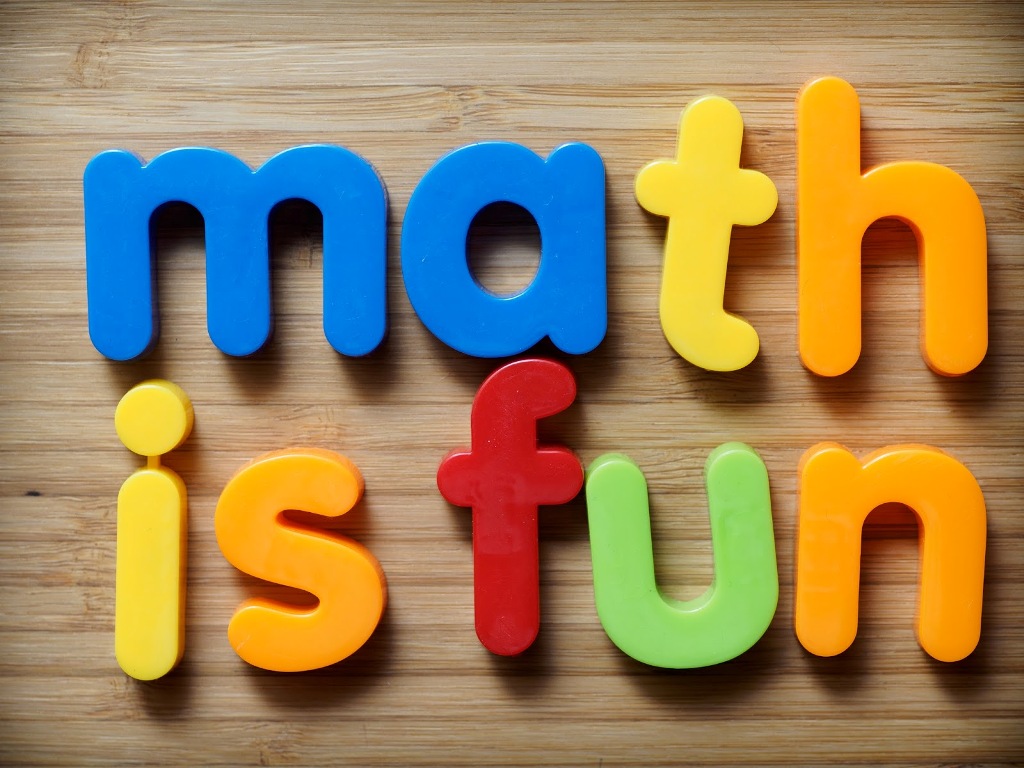The following three subsections include a few of my favourite strategies, resources, and practices that I learned this year in the class! although I enjoyed everything we learned in the course, these are the three most important things that I think I will implement into my own classroom in the future!
Mathematical
Activity #1: RUBRIC Writing (Week 3)
The reading for
week 3 discussed RUBRIC writing and the steps that are involved.
This writing
process could address any course or strand in any elementary, secondary, and
post-secondary classroom. Although it should be introduced at a young age and
practiced into the expert years, RUBRIC writing can be used by any mathematical
learners, at any age, and in any level.
This activity brings out several mathematical ideas, including key terms,
previous mathematical strategies, and reflecting on your work. The recommended
words involved are CHECK, (Mason, Burton, & Stacey, 2010).
In my own classroom, I would have students post their work so that
others can walk around and view it, just as Joyce had us do. Then I would have
all of the students walk around and use the RUBRIC writing (explained
previously) to reflect upon their classmates’ problem-solving methods with the
same question. Finally, I would lead the students through a class-wide
discussion on what worked and what didn’t, as well as how we could implement
this method in the future and apply it to other, similar problems.
It was very insightful to listen to and observe my classmates’ reasoning
behind their methods, and to explain my own techniques when solving the “Open
Box Problem”. It was also useful to hear how my colleagues would plan and
implement their own 3-part lesson using this problem. This not only supported
my knowledge and understanding on the topic, but also provided me with a
realistic way to apply this thinking into my professional practices. The small
groups were also beneficial as they allowed every member to provide input into
potential solutions and each one of us felt like a significant member. Our
individual ideas and thoughts could be brought up to the group and considered
in a collaborative effort with the others. Additionally, I found it especially
interesting to see that every group thought of similar, but unique, solutions
to the problem at hand. Not only did this allow us to see that there are
multiple ways to figure out a solution, but also that every individual has
different ways of thinking and learning. This is crucial knowledge for our
careers, since we will encounter hundreds of students, no one having the same
learning style. There are numerous different ways to solve mathematical
problems, and there is no single “correct” strategy; so teachers must be weary
of this and encourage diversity in the classroom by using differentiated
instructional methods.
In week 6, Joyce explained the “Gallery Walk”
strategy to us, and we had many opportunities to practice this throughout the
course. This is a
method of mathematical problem-solving in which the students complete their
work, then they can either post their solutions or leave them on the desk for
viewing. The name suggests the next part of this strategy, during which
students walk around the “gallery” and view and reflect upon each other’s work.
This procedure
could address any course or strand in any elementary, secondary, and
post-secondary classroom. So long as there are motivated learners and a
knowledgeable facilitator, the “Gallery Walk” strategy would work well. The
content and process expectations that this strategy could address are also
endless. In fact, this procedure could be used in any domain, not just
mathematics. I could apply this to any subject in school that uses
problem-solving processes, which is pretty much every subject.
Some of the mathematical processes that this activity imposes are
independent problem-solving, mathematical communication skills, and reflecting
on your own work, and that of others’. While the students initially solve the
problem at-hand, they have the opportunity to practice their conjecturing and
problem-solving skills on their own, or with little help from the teacher. Once
the students have all had time to attempt the problem, they can then enhance
their ability to communicate their mathematical thinking to peers, by both
verbal and visual means. This involves elaborations that explain and justify
mathematical ideas and strategies with enough detail. Once they have completed
this communication process, they have time to reflect on their own work and review
the work of others. They can also use their classmates’ feedback to learn how
they can better solve similar problems in the future. Being able to implement
colleagues’ feedback and use it to better your own understandings is critical
in any subject matter, mathematics being no exception.
In my own classroom, I would have students post their work so that
others can walk around and view it, just as Joyce had us do. I could also, if
needed, arrange the students in small groups, so that they can collaboratively
develop one solution to the lesson problem on chart paper. Then I would have
all of the students walk around and use the RUBRIC writing (explained
previously) to reflect upon their classmates’ problem-solving methods with the
same question. Finally, I would lead the students through a class-wide
discussion on what worked and what didn’t, as well as how we could implement
this method in the future and apply it to other, similar problems. The purpose
would be made clear to the students: to engage with a range of solutions
through analysis and response. These solutions could also be recorded on
computers, pieces of paper on tables, on the whiteboard, or posted on chart
paper. I would likely schedule 10-20 minutes depending on the instructional
purpose and depth of mathematical analysis expected.
For students, “Gallery
Walk” is a chance to read different solutions and provide oral and written
feedback to improve the clarity and precision of a solution (Unknown, 2019). On
the other hand, for myself as their teacher, it is a chance to circulate around
the classroom and gauge the students’ understanding of the topic. I could note
students’ use of mathematical vocabulary and symbolic notation, as well as
their mis-matched conceptions. From this, I would determine the range of
mathematics evident in the different solutions and hear students’ responses to
their classmate’s mathematical thinking. Such assessment for learning data can help
– me teacher – to determine points of emphasis, elaboration, and clarification
for the ensuing whole class discussion (Fosnot & Dolk, 2002). This would be
a great way to apply assessment of learning and assessment as learning.
This activity
influenced my own teaching journey by showing me that there is always more than
one way to solve a mathematical problem. In other words, different students may
have extremely different processes that they prefer, and may still come up with
the same outcome. Every student
in my class thought of similar, but unique, solutions to the problem we were
given for that lesson. Not only did this allow me to see that there are
multiple ways to figure out a solution, but also that every individual has different
ways of thinking and learning. This is crucial knowledge for my career as an
educator, since we will encounter hundreds of students, no one having the same
learning style. There are numerous different ways to solve mathematical
problems, and there is no single “correct” strategy; so, teachers must be weary
of this and encourage diversity in the classroom by using differentiated
instructional methods.
Math can be fun! in week 9, we gained a plethora of resources, which can be accessed by going to the OAME website, the Math Resource Room, or other online websites. These are resources that we can implement in the classroom to make math more fun for students, or to create the lessons and content that we are teaching.
Technology could be easily used to address any course or strand in any elementary, secondary, and
post-secondary classroom. It seems to have a great impact on student motivation, enjoyment, and success. The
content and process expectations that this strategy could address are also
endless. In the 21st century classroom, technology is a crucial tactic to get students more involved and interested in what it is that they are learning. this also reflects a flipped classroom model of instruction, since students can use technology to teach themselves certain concepts prior to discussing them in further detail in the classroom.
In my own classroom, I would have students select some of their own tech-based activities to investigate and complete, both individually and with each other. I could have students engage in the mathematical problem-solving processes and apply technology in their daily mathematical learning procedures. I could conclude these lessons by leading a a class-wide discussion on why technology is beneficial to use in mathematics and how it could be implemented differently in the future.


Overall, this course was a
terrific learning experience! Upon entering this school year, I would have
never imagined that I would be gaining all of the terrific resources that I
have. Since Mathematics is my second teachable and I am not as confident
teaching it as I am with Physical Education, I really appreciate all of the
support that Joyce and my classmates have provided. I have really enjoyed this
course as a whole, and it has been both insightful and delightful learning from
Joyce and collaborating with my classmates. Throughout the year, I was
fortunate to have been provided with various opportunities to practice and
receive feedback on my mathematical teaching and instruction. I hope to
continue to develop professionally and never stop learning about how to teach
Mathematics in the I/S setting.
I
am officially signing off of this blog, for now. Hope to see you all very soon!
Mason, J., Burton, L.,
& Stacey, K. (2010). Thinking
mathematically (Second Edition). Harlow, England: Pearson Higher Ed.
Fosnot, C., & Dolk,
M. (2002). Young mathematicians at work: Constructing fractions, decimals,
and percents. Portsmouth, NH: Heinemann.
Unknown (2019). Communication
in the Mathematics Classroom. Capacity Building Series. Retrieved from http://www.edu.gov.on.ca/eng/literacynumeracy/inspire/research/CBS_Communication_Mathematics.pdf


















